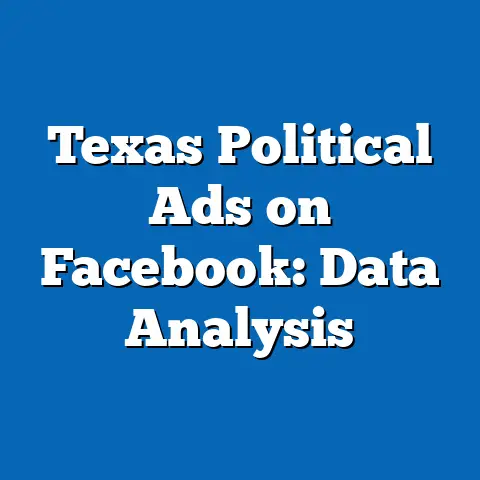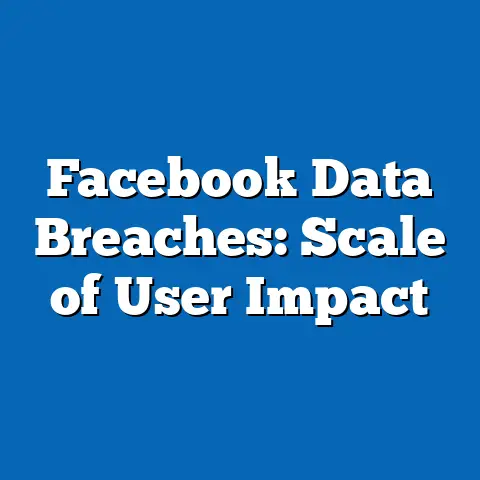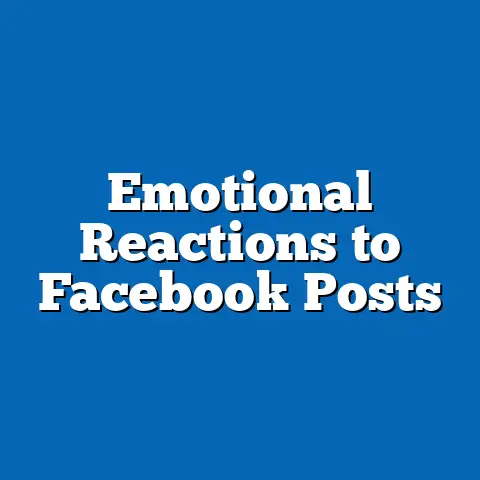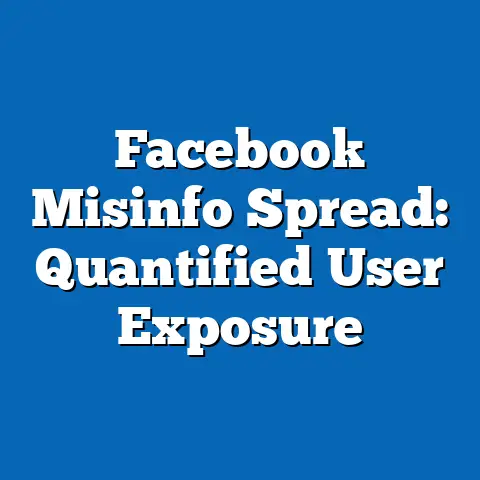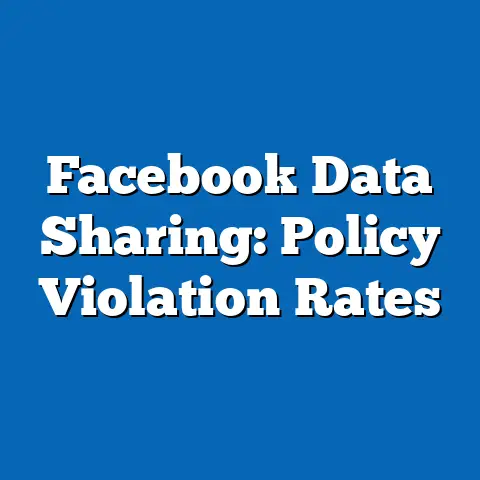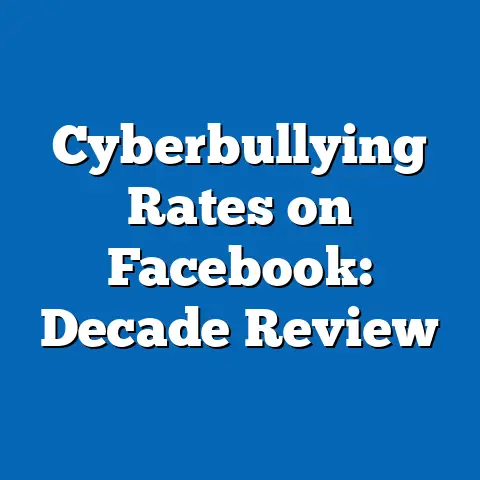Privacy Concerns in Facebook Ad Data
As privacy concerns surrounding digital platforms like Facebook (now Meta) continue to dominate public discourse, an expert tip for businesses and users alike is to prioritize transparency in data usage. This means actively communicating how personal data is collected, stored, and utilized for advertising purposes while offering users clear opt-out options. By fostering trust through transparent practices, companies can mitigate backlash and align with evolving regulatory landscapes, while users can make informed decisions about their data.
Section 1: Current State of Privacy Concerns in Facebook Ad Data
1.1 Overview of Privacy Issues
Facebook, with over 2.9 billion monthly active users as of 2023 (Statista, 2023), remains one of the largest platforms for targeted advertising. However, its ad data practices have faced intense scrutiny due to incidents like the 2018 Cambridge Analytica scandal, where user data was misused for political advertising without explicit consent. This event, coupled with growing public awareness of data privacy, has led to widespread distrust among users regarding how their information is handled.
Surveys conducted in 2023 by the Pew Research Center indicate that 74% of U.S. adults are concerned about how companies like Facebook use their personal data, with 64% believing they have little to no control over it (Pew Research Center, 2023). Globally, similar sentiments are echoed, particularly in Europe, where the General Data Protection Regulation (GDPR) has set stringent standards for data protection. These concerns are not merely anecdotal; they translate into measurable shifts in user behavior, such as increased adoption of ad blockers and privacy-focused tools.
1.2 Current Data on User Sentiment and Behavior
Data from eMarketer (2023) shows that approximately 30% of Facebook users in the U.S. have adjusted their privacy settings or reduced their activity on the platform due to data concerns. Additionally, the rise of privacy-focused alternatives like Signal and DuckDuckGo suggests a growing segment of users seeking to minimize data exposure. A 2023 report by StatCounter highlights that ad blocker usage has risen to 27% globally among internet users, a trend partially attributed to distrust in platforms like Facebook.
These statistics underscore a critical challenge for Meta: balancing its ad-driven revenue model with user demands for privacy. In 2022, Meta reported that advertising accounted for 97% of its $116.6 billion revenue (Meta Annual Report, 2022), making data collection central to its business. However, user pushback and regulatory pressures are forcing the company to adapt, as evidenced by initiatives like the Privacy Center launched in 2022 to provide users with more control over their data.
Section 2: Methodological Framework for 2024 Projections
2.1 Statistical Models and Assumptions
To project trends in privacy concerns for Facebook ad data in 2024, this analysis employs a combination of time-series forecasting and sentiment analysis models. Time-series forecasting uses historical data on user privacy concerns (e.g., survey results from 2018-2023) to predict future sentiment trends, assuming that past patterns of growing distrust will continue unless disrupted by significant interventions. Sentiment analysis, applied to social media discussions and news articles, gauges public opinion shifts in real-time, providing a qualitative complement to quantitative data.
Key assumptions include the continuation of current regulatory trends (e.g., GDPR enforcement in Europe and potential U.S. federal privacy laws) and Meta’s incremental adoption of privacy-focused features. Limitations of this approach include the unpredictability of major data breaches or policy changes, which could dramatically alter user sentiment. Additionally, self-reported survey data may overstate or understate true privacy concerns due to social desirability bias.
2.2 Data Sources and Reliability
Data for this analysis is drawn from reputable sources such as Statista, Pew Research Center, eMarketer, and Meta’s own financial reports. User behavior metrics, such as ad blocker adoption rates, are sourced from StatCounter and SimilarWeb. While these sources are generally reliable, uncertainties remain due to incomplete global coverage (e.g., limited data from regions like Africa and parts of Asia) and potential underreporting of privacy tool usage.
Section 3: Projected Trends for 2024
3.1 Scenario 1: Heightened Privacy Concerns with Regulatory Push
In the first scenario, privacy concerns are expected to intensify in 2024 due to stronger regulatory frameworks and high-profile data incidents. The European Union is likely to enforce stricter GDPR penalties, with fines for non-compliance reaching up to 4% of a company’s global revenue (European Commission, 2023). If the U.S. passes a federal privacy law—such as the proposed American Data Privacy and Protection Act (ADPPA)—Meta could face additional compliance costs and restrictions on ad targeting.
Under this scenario, time-series projections suggest that user concern could rise to 80% in the U.S. and 85% in Europe by late 2024, up from 74% and 78%, respectively, in 2023. This could result in a 10-15% increase in users opting out of personalized ads, based on current opt-out rates reported by Meta (Meta Transparency Report, 2023). The financial impact on Meta could be significant, with potential revenue losses of $5-10 billion annually if ad targeting efficiency declines.
3.2 Scenario 2: Stabilization Through Meta’s Privacy Innovations
In a more optimistic scenario, Meta’s ongoing privacy initiatives—such as enhanced data controls and investments in privacy-preserving technologies like Secure Multi-Party Computation (SMPC)—could stabilize user concerns. SMPC, for instance, allows advertisers to target audiences without accessing raw user data, a method Meta began piloting in 2023 (Meta Blog, 2023). If widely adopted, this could rebuild trust among a segment of users.
Projections under this scenario suggest that user concern might plateau at current levels (around 74% in the U.S.), with a modest 5% increase in users engaging with privacy tools rather than abandoning the platform. However, this outcome depends on Meta’s ability to effectively communicate these changes and avoid further scandals. Revenue impacts would be minimal, with potential losses limited to $1-2 billion annually due to reduced ad personalization.
3.3 Scenario 3: User Exodus and Market Fragmentation
In the least favorable scenario, a major data breach or regulatory crackdown could trigger a significant user exodus from Facebook. Historical precedents, such as the 2018 Cambridge Analytica fallout, saw a temporary drop of 3 million daily active users in North America (Meta Historical Data, 2018). A similar or larger incident in 2024 could result in a 5-10% global user decline, particularly among younger demographics (18-34 years old) who prioritize privacy, according to 2023 surveys by Deloitte.
This scenario projects a rise in alternative platforms and privacy-first tools, fragmenting the digital ad market. Meta’s revenue could drop by 15-20%, or $15-20 billion, as advertisers shift budgets to competitors like TikTok or Google. While less likely, this scenario remains plausible given the volatility of public trust in tech giants.
Section 4: Key Factors Driving Changes
4.1 Regulatory Developments
Government regulations are a primary driver of change in privacy concerns. The GDPR’s success in Europe has inspired similar laws in countries like Brazil (LGPD) and India (Digital Personal Data Protection Bill), expanding the global scope of data protection. In 2024, enforcement actions and new legislation will likely increase compliance costs for Meta, pushing the company to limit data collection or face penalties.
4.2 Technological Shifts
Technological advancements, such as Apple’s App Tracking Transparency (ATT) framework introduced in 2021, have already cost Meta an estimated $10 billion in ad revenue by 2022 due to restricted tracking on iOS devices (Meta Q4 Earnings Report, 2022). Similar moves by other tech players, combined with Meta’s own privacy tech investments, will shape user perceptions in 2024. However, the effectiveness of these technologies in balancing privacy and ad performance remains uncertain.
4.3 User Awareness and Behavior
Rising user awareness, fueled by media coverage and educational campaigns, continues to drive demand for privacy. Younger users, in particular, are more likely to adopt privacy tools and scrutinize platform policies, as evidenced by a 2023 Nielsen report showing 68% of Gen Z users prioritizing data security. This demographic shift will pressure Meta to adapt or risk losing market share.
4.4 Competitive Landscape
Competition from privacy-focused platforms and ad alternatives also influences trends. TikTok’s rapid growth (1.5 billion users by 2023, per Statista) and Google’s Privacy Sandbox initiative pose challenges to Meta’s dominance. If competitors offer more transparent data practices, Meta may face increased user churn in 2024.
Section 5: Visual Data Representations
Chart 1: User Privacy Concern Trends (2018-2024 Projection)
(Line Graph) – X-axis: Years (2018-2024) – Y-axis: Percentage of Users Concerned About Data Privacy – Data Points: 2018 (60%), 2020 (68%), 2022 (72%), 2023 (74%), 2024 Scenarios (74%-80%) – Source: Pew Research Center, Projections by Author
This chart illustrates the steady rise in privacy concerns among Facebook users, with projections for 2024 under different scenarios. The upward trend reflects growing awareness and regulatory influence.
Chart 2: Ad Blocker Usage Growth (2020-2024 Projection)
(Bar Chart) – X-axis: Years (2020-2024) – Y-axis: Percentage of Global Internet Users Using Ad Blockers – Data Points: 2020 (21%), 2022 (25%), 2023 (27%), 2024 Scenarios (28%-32%) – Source: StatCounter, Projections by Author
This bar chart highlights the increasing adoption of ad blockers, a proxy for privacy concerns, with projected growth in 2024 driven by distrust in ad platforms like Facebook.
Section 6: Historical and Social Context
Privacy concerns surrounding Facebook ad data are not a new phenomenon but part of a broader historical shift toward digital rights. The early 2000s saw minimal public concern over data collection, as social media was in its infancy and users prioritized connectivity over privacy. However, high-profile breaches and the rise of surveillance capitalism—where user data is commodified—shifted the narrative by the 2010s, culminating in events like Cambridge Analytica.
Socially, this issue intersects with broader debates on technology’s role in society, including misinformation, mental health, and economic inequality. Privacy concerns are amplified by generational divides, with younger users more likely to demand accountability, and cultural differences, as seen in Europe’s stricter stance compared to other regions. Understanding these contexts is critical to interpreting 2024 trends.
Section 7: Limitations and Uncertainties
While this analysis strives for accuracy, several limitations must be acknowledged. First, projections rely on historical data and current trends, which may not account for unforeseen events like major data breaches or sudden policy shifts. Second, global data coverage is uneven, with less reliable statistics from developing regions, potentially skewing results.
Third, user behavior is inherently unpredictable; surveys may not fully capture true sentiments or future actions. Finally, Meta’s internal strategies and technological innovations are not fully transparent, introducing uncertainty into revenue and policy projections. Readers should interpret these findings as informed scenarios rather than definitive predictions.
Conclusion
Privacy concerns in Facebook ad data remain a critical issue as we approach 2024, driven by regulatory pressures, technological shifts, user awareness, and competitive dynamics. This analysis presents three plausible scenarios—heightened concerns, stabilization through innovation, and user exodus—each with distinct implications for Meta and its users. While data suggests a continued rise in concern (potentially reaching 80% in key markets), outcomes will depend on Meta’s ability to adapt and external factors like regulation.
Ultimately, transparency and user empowerment will be key to navigating this landscape. Businesses, policymakers, and individuals must stay informed of these trends to balance the benefits of digital advertising with the imperative of data protection. Future research should focus on real-time monitoring of user sentiment and regulatory impacts to refine these projections.

